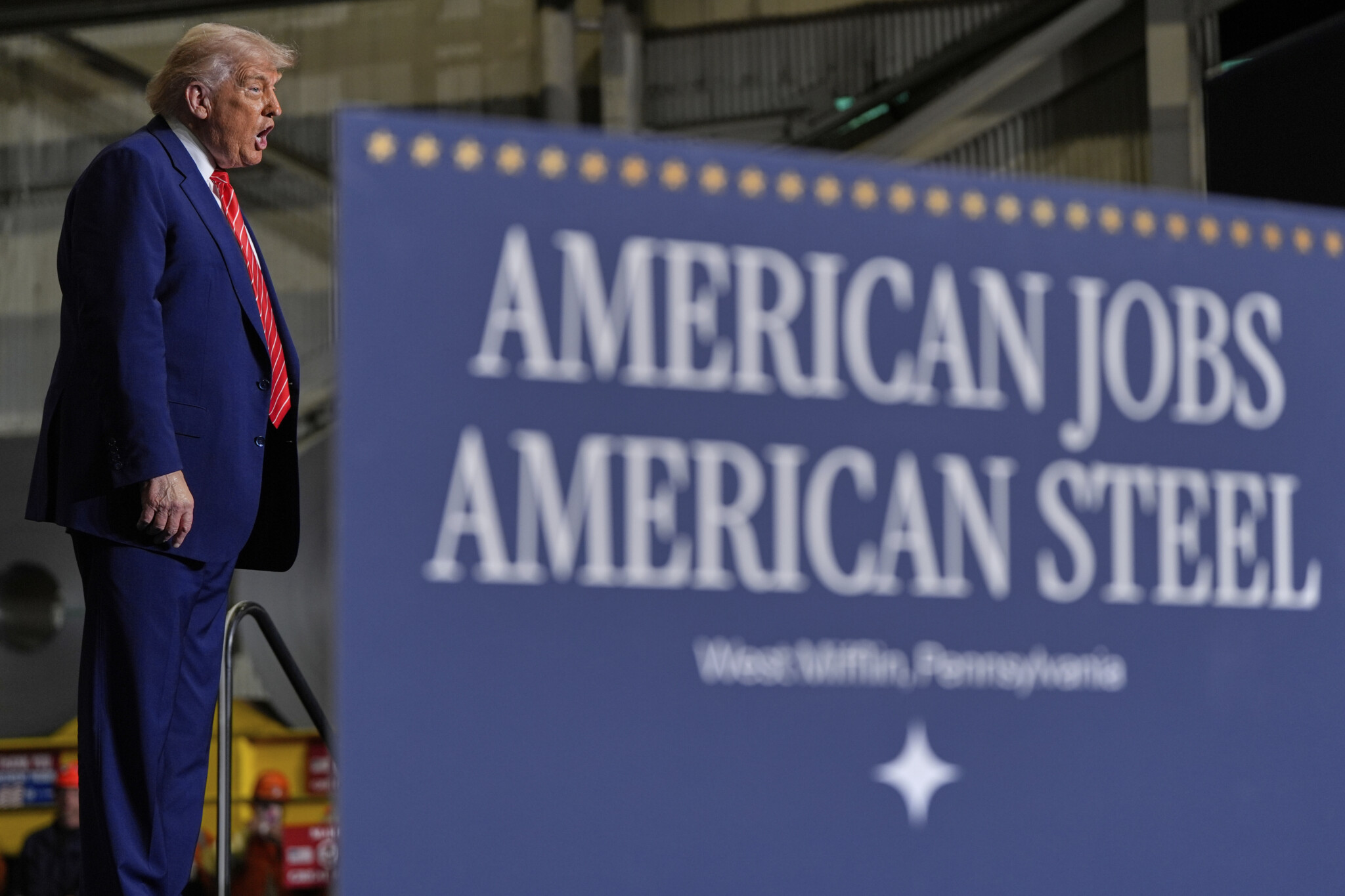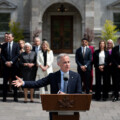In this edition of the Notebook, we look at the growing costs and limits of Canada’s tariff retaliation strategy after the U.S. doubled its tariffs on our steel producers. We also dig into fresh data on exports, jobs, housing, and the continued struggles of the country’s broadcasting sector.
This week’s big development was another escalation in the trade fight with the U.S.
President Donald Trump doubled tariffs on Canadian steel and aluminum to 50 percent. As the largest exporter of these metals to the U.S., Canada’s producers—already dealing with the 25 percent tariffs—now face an existential threat.
I won’t recap the headlines.
What I want to highlight instead is what the flare-up—and the inevitable calls for reprisals—tell us about Canada’s current strategy around retaliatory tariffs. Our response has been muddled, ineffective, and costly—a maze of different streams of counter tariffs and exemptions. It’s a messy inheritance from the election campaign, and it may be getting in the way of responding effectively to real threats like this one.
For now, Carney is holding off on new retaliatory measures because he’s in “deep talks” with Trump on a possible security and trade agreement.
Maybe that truce comes. But even if it does, not all the tariffs are going away, as U.S. Ambassador Pete Hoekstra told the Toronto Star’s Tonda MacCharles. So it’s important to ask: what does a smart Canadian response to U.S. tariffs actually look like?
There are three main reasons a country retaliates in a trade dispute:
- To deter further action
- To protect domestic industry
- To raise money to help impacted workers and businesses
Each has its logic. But tariffs also come with real costs–to households, to businesses, and to the broader economy. Retaliation has limits, especially when you’re up against a much larger economy like the U.S. Carney’s job is to weigh these trade-offs, all while navigating complex regional, sectoral, and political pressures.
Let’s take each of the arguments in turn.
Revenue: Tariffs are a terrible way to raise money. They’re inflationary, regressive, and make it harder for the Bank of Canada to lower interest rates. If the goal is to support impacted industries or workers, there are far better and fairer ways to raise revenue.
Deterrence: There’s not much evidence that our current counter-tariffs are deterring Trump. After all, we’ve just seen an escalation. The fact that Canada has been spared some of the harsher U.S. actions, meanwhile, likely owes more to the commercial imperative of North American supply chains than to anything we’ve done. Mexico, notably, has not retaliated to the same extent, and yet it’s received similar exemptions.
Sheltering domestic industry: Targeted counter-tariffs at the industry level are where the case for retaliation is strongest. If the U.S. blocks our steel, we should respond with like-for-like measures. But the goal isn’t to punish the U.S., it’s to protect Canadian producers and buy them time to adjust. That could include counter-tariffs, but also liquidity support, wage subsidies, procurement guarantees, or help accessing new markets.

Mark Carney speaks to steel workers after touring the ArcelorMittal Dofasco steel plant in Hamilton, Ont., on Wednesday, March 12, 2025. Nathan Denette/The Canadian Press.
Take steel. The sector isn’t just asking for reciprocal tariffs on the U.S. It also wants safeguards against dumping from non-North American countries selling below market prices. In this case, using strategic tariffs makes sense since Canada imports a lot of steel, including from the U.S. Well-designed tariff countermeasures can offer real support.
But aluminum is trickier. We don’t import much of it. So tariffs won’t open up domestic markets for our producers. And slapping tariffs on unrelated U.S. goods in retaliation, like on oranges, won’t do much to help our aluminum industry either. Which is why Quebec Premier François Legault, worried about aluminum jobs, has been less adamant about retaliatory measures than Ontario’s Doug Ford, whose province has a major steel footprint.
The broader message: stop trying to match U.S. tariffs dollar for dollar. Dump the symbolic levies on oranges and coffee. Focus on helping specific threatened industries stay alive by using every available tool, whether with tariffs or something else.
To his credit, Carney’s government seems to be leaning toward a more nuanced approach, one that acknowledges the limits of going toe-to-toe with the U.S. But the political environment he helped shape, with its maximalist campaign rhetoric, is boxing him in. It’s made it harder for him to fully articulate a more strategic, calibrated path forward.
The Conservatives, cast as weak on Trump during the campaign, aren’t going to let him forget it. And I don’t blame them.
But the result is a missed opportunity for a serious conversation about what smart retaliation could actually look like. Our current tariff regime is confusing, scattershot, and clearly not stopping Trump. It’s just making life more expensive for Canadian families.
Exports plunge, but don’t panic—yet
It’s rare that international merchandise trade numbers end up above the fold on the front page of the Globe and Mail, but April’s data released this week gave us the first hard look at the fallout from the trade war.
Canadian exports fell 11 percent, one of the worst one-month drops on record, driven by a 16 percent plunge in shipments to the U.S. That pushed our monthly trade deficit to a record $7.1 billion.
But keep in mind, it’s just one month of the year. We need to be careful how we interpret the report since there’s still a lot of noise in the numbers.
For example, a lot of businesses front-loaded shipments before tariffs hit, which padded numbers in early 2025 and made April’s drop look worse than it probably is.
In fact, exports to the U.S. over the first four months of the year are still up 5.3 percent from 2024. That’s still robust.
From if to how: Liberals table major projects bill
Carney also tabled on Friday the government’s marquee economic piece of legislation that aims to reduce barriers to internal trade and accelerate infrastructure projects deemed to be in the national interest.
Projects designated to be in the national interest will be considered “conditionally approved.” After that, the focus of the remaining review processes will be on “how” the project will be built as opposed to “whether” it can be. The new federal major projects office will coordinate these reviews.
Carney told reporters he wants the legislation to be passed before parliament breaks for summer on June 20, and said he would be willing to extend the session if needed.
Jobs stagnant, unemployment rises
Statistics Canada also released jobs data for May this week, showing continued weakness and growing labour slack, but still no evidence of mass layoffs.
We added a net of 8,800 jobs last month. But the labour force kept growing, so the unemployment rate ticked up to 7 percent. That’s the highest jobless rate since 2016, if you exclude the pandemic years.
The manufacturing sector—right at the heart of the trade fight—has lost 55,000 jobs since January.
No relief in sight for Toronto housing
The Bank of Canada kept interest rates on pause this week, which probably came as a disappointment to the Toronto real estate market. If there’s one sector desperate for rate relief, it’s Toronto real estate.
According to data released this week, home sales in the city are still on pace for their worst spring in nearly three decades. There was a bit of a bounce in May, but activity is still well below last year’s levels. The benchmark price is down 4.5 percent year-over-year. Sales are down 13 percent.
Only 24,755 homes sold in the Toronto region in the first five months of 2025—that’s the lowest since 1998. Listings are piling up. At nearly 31,000 active listings, we may be at a record.
The average Toronto home sold for $1.07 million in May.
The Vancouver market is showing similar trends.

Real estate for sale signs are shown in Oakville, Ont. on December 1, 2018. Richard Buchan/The Canadian Press.
Canadian broadcasters still deep in the red
StatsCan also published 2024 financials for the broadcasting industry. Television revenues fell 2.3 percent to $6.3 billion, led by private broadcasters. Public TV actually saw a bump in sales last year, with a 14 percent gain.
Private TV lost $393 million in 2024. They’ve only turned a profit once since 2006, with a cumulative loss of $3.2 billion over that time.
Radio had a small bright spot. Revenues were up 1.3 percent, the first increase in six years. Losses also shrank to $1.3 million, down from nearly $100 million. But again, it was public radio that made all the gains in revenue.
Assorted links
Housing ambitions: TD Economics casts some doubt over the feasibility of Carney’s ambitious plan to ramp up home building to 500,000 a year. But Canada probably can restore affordability with a lower target, while still cautioning that any significant increase will be a “tall order.”
Economic divergence: Desjardins economist Laura Gu on the uneven economic prospects for Canadian provinces. Central Canada isn’t doing as well as the rest of the country.
Budget delay uncertainty: Bloomberg surveyed economists on the government’s decision to delay the budget. Their views: it adds to uncertainty, but it won’t undermine fiscal credibility.
Vulnerable Quebec: BMO Economics finds that the ramp-up of tariffs on aluminum leaves Quebec with the highest effective tariff rate among provinces.
Immigration’s city limits: A new report from the C.D. Howe Institute on how immigration can exacerbate disparities among provinces by concentrating newcomers in major urban centres, leaving smaller communities facing stagnation and aging populations. The study concludes that immigration strategies must be integrated with broader investments in infrastructure, services, and economic development to better support slow-growing areas.










